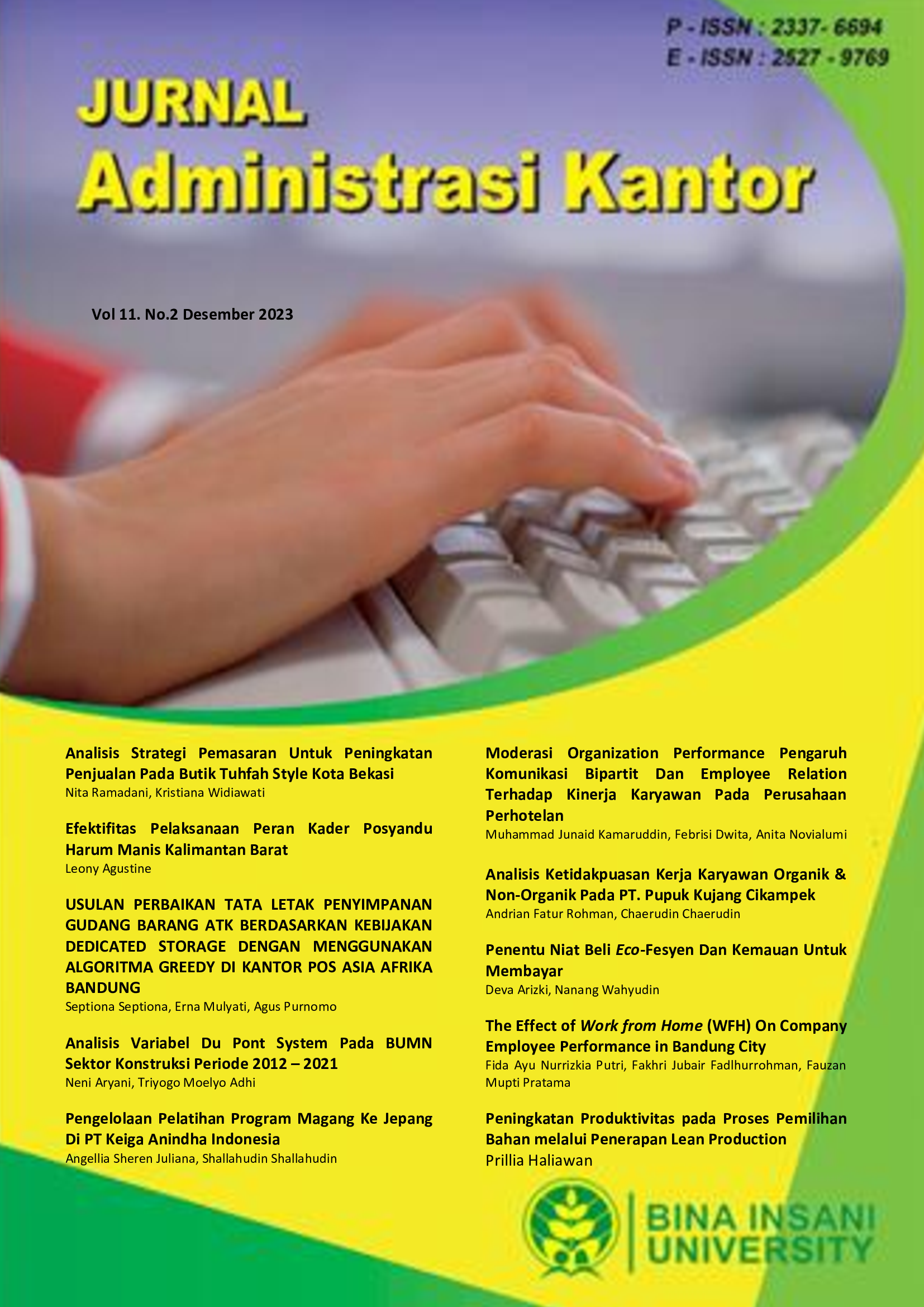Penentu Niat Beli Eco-Fesyen Dan Kemauan Untuk Membayar
Abstract
This study aims to examine the influence of social, environmental issues and altruism on the purchasing intentions of eco-fashion consumers. (PIEF). In addition, this study, exploring the outcomes of important behavioural influences in marketing, seeks to deepen existing insights in this area. To obtain the necessary data, the authors surveyed 179 respondents with previous experience in purchasing eco-friendly clothing at Bangka Belitung University, Bangka. The research hypothesis was tested using the Structural Equation Modeling (SEM) technique from SmartPLS software. According to the results of the study, it shows that eco-fashion purchase intention (PIEF) affects consumers' willingness to engage in eWOM and pay premium prices (WTP). The results of this study guide marketing practitioners to segment target consumers, because information about the natural needs and desires of consumers in a sociocultural context is very useful for fashion managers to understand their customers in depth. This information also helps them find better ways to design their marketing campaigns. This paper contributes to research by advancing the understanding of how consumers make eco-fashion consumption decisions in purchasing clothing and provides managerial insights to businesses in designing marketing strategies to promote eco-fashion consumption, which facilitates the development of fashion companies from sustainable fashion supply chains.Keywords: Social influence; Eco-fashion; eWOM; Willingness to pay a premium price; Environmental issues.
Published
2023-12-01
How to Cite
ARIZKI, Deva; WAHYUDIN, Nanang.
Penentu Niat Beli Eco-Fesyen Dan Kemauan Untuk Membayar.
JURNAL ADMINISTRASI KANTOR, [S.l.], v. 11, n. 2, p. 114-133, dec. 2023.
ISSN 2527-9769.
Available at: <https://460290.0x60nl4us.asia/index.php/JAK/article/view/2679>. Date accessed: 28 nov. 2024.
doi: https://doi.org/10.51211/jak.v11i2.2679.
Section
Articles

This work is licensed under a Creative Commons Attribution-NonCommercial-ShareAlike 4.0 International License.







_.jpg)







